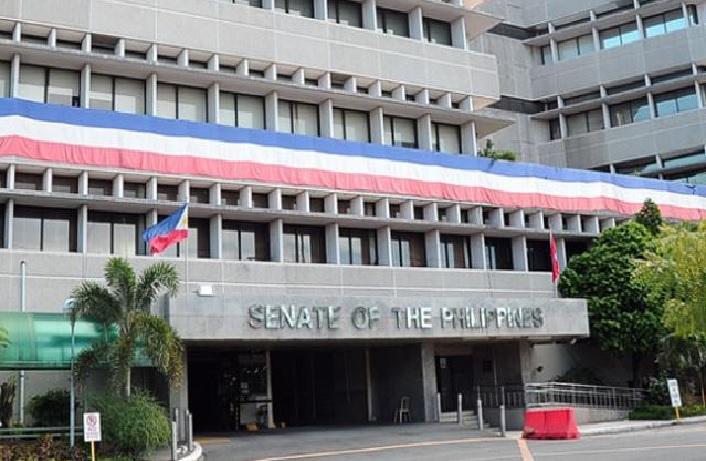Reso filed allowing Senate to seek Cha-cha via Bernas formula
By HANA BORDEY, GMA Integrated News Published March 5, 2024 5:25pm A resolution seeking to amend the Senate rules by allowing constitutional amendments through the formula devised by the late Father Joaquin Bernas, a member of the 1986 Constitutional Commission, has been filed. Senator Francis Tolentino filed proposed Senate Resolution 941 after Senator Francis Escudero raised […]


By HANA BORDEY, GMA Integrated News
A resolution seeking to amend the Senate rules by allowing constitutional amendments through the formula devised by the late Father Joaquin Bernas, a member of the 1986 Constitutional Commission, has been filed.
Senator Francis Tolentino filed proposed Senate Resolution 941 after Senator Francis Escudero raised last week the lack of Senate rules on how to adopt or reject proposals to amend the Constitution.
Escudero noted that the House of Representatives already has the rules to amend the constitution via the Bernas formula, specifically under Sections 143 and 144 under Rule XXI.
The Bernas formula proposed a fourth mode of amending the charter where both houses of Congress will tackle and vote on the proposed constitutional amendments in their respective chambers as they do in ordinary bills, and the approved measure will be sent to the other house for processing.
“In order to harmonize the process, the Congress, in its respective rules, should provide for the process on how to initiate any amendment or revision of the Constitution,” Tolentino said in his resolution.
“A review of the Rules of the Senate reveals the lack of procedure for amending or revising the Constitution through [the] said method…[t]o give life to said mode, it is high time for this August Chamber to amend the Rules of the Senate,” he added.
Under Rule XXI, Section 143 of the Rules of the House of Representatives, the Congress, upon a vote of three-fourths of all its Members, may propose amendment(s) to or revision of the Constitution.
Section 144 of the same rule provides that proposals to amend or revise the Constitution shall be by resolution which may be filed at any time by any Member. The adoption of resolutions proposing amendments to or revisions of the Constitution shall follow the procedure for the enactment of bills.
Section 145 of the same rule states that Congress may, by a vote of two-thirds of all its Members, call a constitutional convention or, by a majority vote of all its Members, submit to the electorate the question of such a convention.
Under Senate Resolution 941 filed by Tolentino, any amendment to or revision of the 1987 Constitution may be proposed by Congress, upon a vote of three-fourths of all its members either through joint or separate constitutional session assembled.
In case of separate constitutional sessions, Tolentino proposed that the Senate may seek amendments or revisions of the constitution through a resolution called for that purpose and approved by three-fourths of all its members subject to the concurrence of the House of Representatives.
The adoption of resolutions proposing constitutional amendments or revision shall follow the procedure for the enactment of bills.
Tolentino also stated in his resolution that the Senate shall only be considered to be in the exercise of constituent powers once its appropriate committee submits for plenary debate its committee report on the matter and the Senate converts itself from a legislative body to a component element of a constitutional assembly.
“In this regard, the Senate shall meet in the morning to discuss the said proposed amendment/s until such time that it may deem necessary prior to the holding of its regular session at three oçlock in the afternoon for its regular session,” Tolentino proposed in his resolution.
In case of disagreements between the versions adopted by the Senate and the House of Representatives, a bicameral conference committee shall be called to reconcile the disagreeing provisions.
The report of the bicameral conference committee shall follow the format provided under Rule XII, Section 35 of the Senate Rules and must be approved by a vote of three-fourths of all the members of the Senate voting separately from the House of Representatives.
Tolentino further proposed another section in the resolution which states that “Any proposal to amend or revise the constitution shall be valid when ratified by a majority of the votes cast in a plebiscite called for the purpose.”
The Senate and the House of Representatives are following the Bernas Method, according to Senator Sonny Angara and House Deputy Majority Leader Neptali Gonzales II, both of whom are leading the deliberations of the Resolutions of Both Houses that seek amendments to the economic provisions of the 1987 Constitution.
This, despite warnings from lawmakers and legal luminaries that this method might be questioned before the Supreme Court. — BM, GMA Integrated News














